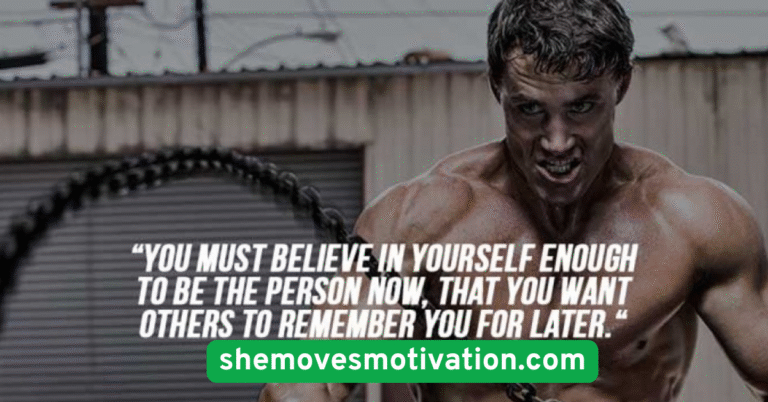5 Positive Fitness Motivation Ideas to Stay Consistent
If you’ve ever felt super pumped to start exercising only to fizzle out a week later, you’re not alone. Studies reveal that over 80% of people abandon their fitness resolutions by February! That doesn’t mean you’re lazy or unmotivated. It just means you need a better system—one built on positivity, not pressure.
This guide is here to change that. Instead of relying on guilt, punishment, or “no pain, no gain” mantras, we’ll tap into uplifting, practical fitness motivation ideas. Whether you’re just starting out or trying to get back on track, these five powerful strategies will help you enjoy the process and build a routine that sticks. Ready to fall in love with fitness again?
1. Set Meaningful Micro-Goals
Big goals like “lose 20 pounds” or “run a marathon” are great—but they can also be overwhelming. That’s why setting micro-goals is such a game-changer when it comes to fitness motivation.
Break It Down to Build It Up
Micro-goals are small, achievable targets that you can reach in a week or even a day. Think: “Do 3 workouts this week,” “Drink 2 liters of water daily,” or “Stretch for 5 minutes after waking up.” These may seem minor, but they build momentum and help create lasting fitness habits.
Why It Works
When you accomplish a micro-goal, your brain gets a hit of dopamine, the feel-good chemical that keeps you coming back for more. And let’s face it—crossing something off a list just feels amazing.
Celebrate Every Win
You don’t have to wait until you reach your ultimate goal to celebrate. Each step forward matters. Reward yourself with non-food treats like a relaxing bath, a new workout tank, or an episode of your favorite show. These mini-celebrations reinforce your progress and keep you excited about what’s next.
Track It Visually
Use a fitness planner, whiteboard, or a simple habit tracker app. Seeing your progress grow—whether it’s streaks, stars, or smiley faces—keeps your motivation high and your goals top of mind.

2. Create a Feel-Good Workout Environment
Ever notice how much more energized you feel in a clean, sunny room versus a cluttered one? Your workout environment plays a massive role in your motivation and consistency.
Build Your Personal Fitness Vibe
Whether you exercise at home or in a gym, it’s worth curating a space that sparks joy. Light a candle, put up motivational quotes, or keep your workout shoes by the door. Make it inviting so that your brain starts associating fitness with comfort and confidence—not dread.
Music is Magic
Music can lift your mood instantly. Create playlists that get your heart racing and your feet moving. Whether it’s pop, hip-hop, or motivational podcasts, the right soundtrack can transform your entire workout.
Visuals and Scents Matter
Visual triggers like mirrors or vision boards can remind you of your “why.” Meanwhile, energizing scents like citrus or peppermint can help you feel refreshed and ready. Small touches like these create a multi-sensory experience that makes working out feel special.
Keep It Budget-Friendly
You don’t need a fancy home gym setup. Even a yoga mat, resistance bands, and good lighting can go a long way. The key is making the space feel like yours—a spot you actually want to visit every day.

3. Surround Yourself with Positive Accountability
There’s something powerful about not going it alone. When you have people who check in, cheer you on, or just know what you’re trying to do, sticking to your goals becomes much easier.
The Power of Community
Whether it’s a workout buddy, a group fitness class, or an online challenge, community builds consistency. You’re not just working out for yourself—you’re showing up for others, too. That kind of accountability makes skipping less tempting.
Virtual Support Works Too
Can’t find a local gym crew? No problem. Join fitness Facebook groups, follow inspiring trainers on social media, or join an online challenge like a 30-day abs program or walking club. Even virtual high-fives can boost your energy.
Choose Encouragement Over Shame
Find people who lift you up, not those who guilt-trip or shame. The best accountability partners are those who text “You got this!” on tough days—not “Why did you miss a workout?” Positive reinforcement keeps you coming back.
Make It Fun and Flexible
Accountability doesn’t have to be rigid. Try weekly check-ins, shared calendars, or simple “sweaty selfie” texts with a friend. The more fun you make it, the more likely you’ll stick with it.

4. Reframe Your “Why” with Self-Compassion
Let’s be real: most of us have used exercise as punishment. But here’s the truth—self-compassion is a far better motivator than self-criticism.
Shift Your Mindset
Instead of focusing on weight loss or “fixing” your body, think about what fitness gives you. Energy. Confidence. Better sleep. Less stress. When your “why” is rooted in care rather than shame, working out feels like a gift.
Journal It Out
Write about your deeper reasons for staying active. Do you want to feel strong picking up your kids? Improve your mood? Sleep better? Journaling helps clarify goals and makes them feel more personal and powerful.
Forgive, Don’t Punish
Missed a workout? Ate something “off plan”? It’s OK. Life happens. What matters is what you do next. Instead of spiraling into guilt, treat yourself with the same kindness you’d show a friend. Then gently get back on track.
Celebrate What Your Body Can Do
Whether you walked 10 minutes or crushed a tough HIIT class, give yourself credit. Your body shows up for you daily. Gratitude and pride are powerful fuels for consistency.

5. Reward Progress Without Sabotaging Goals
Let’s talk rewards—the right way. Because YES, you deserve to treat yourself for showing up. But you want rewards that align with your progress, not undo it.
Rethink Your Rewards
Skip the “cheat meal” mentality. Instead, reward consistency with things that support your goals: new gear, a massage, or time off. These kinds of rewards reinforce the habit and keep you focused.
Use the Dopamine Loop
Every time you reward yourself, your brain links exercise to pleasure. This builds a positive dopamine feedback loop—and that’s exactly what keeps habits alive long-term.
Track & Reflect
Create a calendar where you add stars, stickers, or notes about how you felt after each workout. Once you hit a milestone (like 10 sessions), pick a reward. You’ll feel accomplished and motivated to keep going.
Small Joys Matter
Your reward doesn’t have to be big or expensive. A favorite tea, a nap, an uninterrupted shower—anything that feels good can be motivation fuel. Just make sure your reward brings joy and doesn’t conflict with your bigger goals.

Conclusion
Let’s wrap it up: Motivation doesn’t have to be a mystery or a magical feeling that hits at random. It can be built—with the right tools, intention, and support.
By focusing on micro-goals, creating a motivating space, surrounding yourself with positive people, being kind to yourself, and celebrating your wins the right way, you’re building a fitness lifestyle that lasts. One that feels good, not forced. One that energizes you, not exhausts you.
So, pick one idea from this list and try it this week. You might be amazed at how much better fitness feels when it’s grounded in positivity, self-love, and a little fun. Remember: You don’t have to be perfect. You just have to be consistent.





